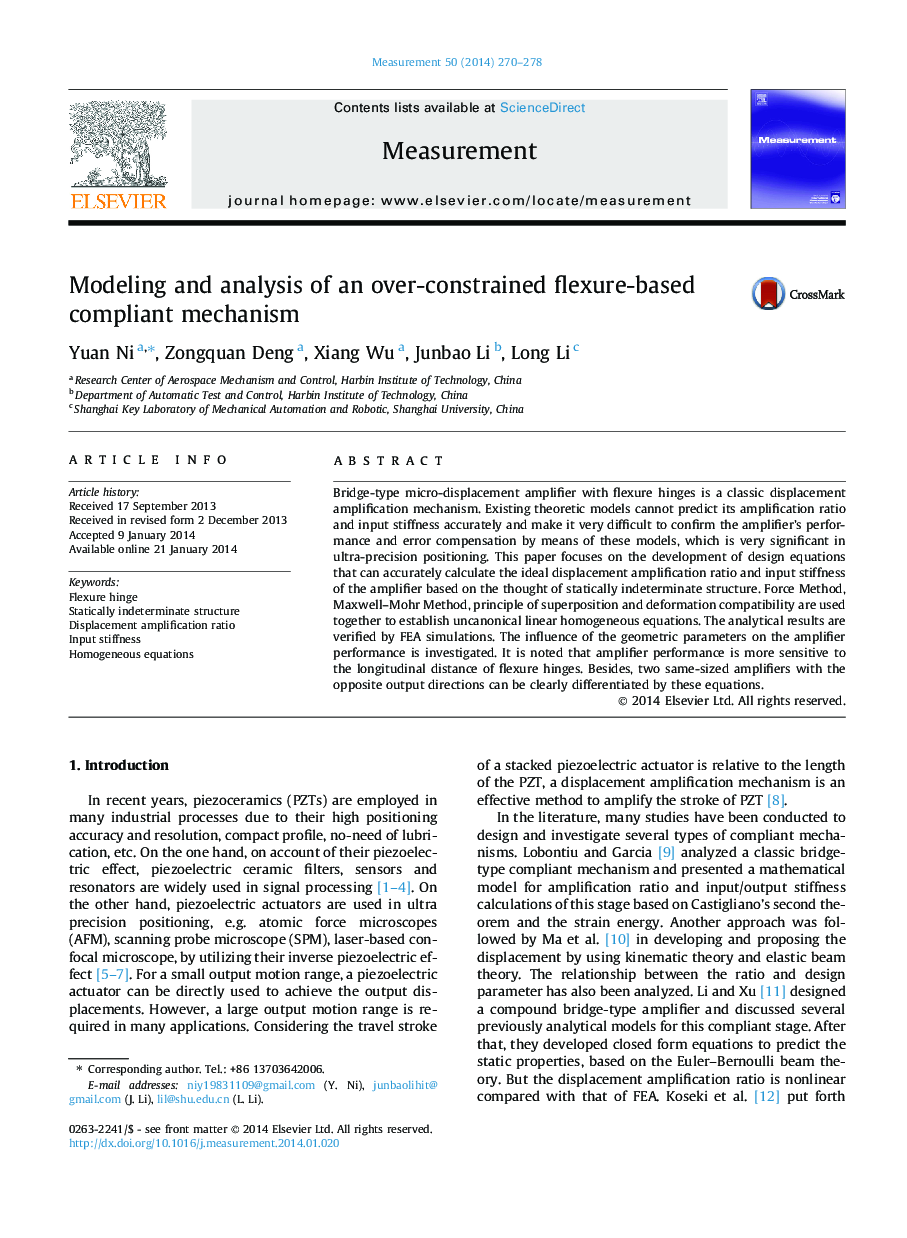| کد مقاله | کد نشریه | سال انتشار | مقاله انگلیسی | نسخه تمام متن |
|---|---|---|---|---|
| 730276 | 1461537 | 2014 | 9 صفحه PDF | دانلود رایگان |
• Performance modeling of a flexure-based compliant mechanism is obtained.
• Influence of geometric parameters has been discussed.
• Two amplifiers with identical geometric ratio can be distinguished by this method.
• The method used in this paper can be used to calculate other type of amplifiers.
Bridge-type micro-displacement amplifier with flexure hinges is a classic displacement amplification mechanism. Existing theoretic models cannot predict its amplification ratio and input stiffness accurately and make it very difficult to confirm the amplifier’s performance and error compensation by means of these models, which is very significant in ultra-precision positioning. This paper focuses on the development of design equations that can accurately calculate the ideal displacement amplification ratio and input stiffness of the amplifier based on the thought of statically indeterminate structure. Force Method, Maxwell–Mohr Method, principle of superposition and deformation compatibility are used together to establish uncanonical linear homogeneous equations. The analytical results are verified by FEA simulations. The influence of the geometric parameters on the amplifier performance is investigated. It is noted that amplifier performance is more sensitive to the longitudinal distance of flexure hinges. Besides, two same-sized amplifiers with the opposite output directions can be clearly differentiated by these equations.
Journal: Measurement - Volume 50, April 2014, Pages 270–278
